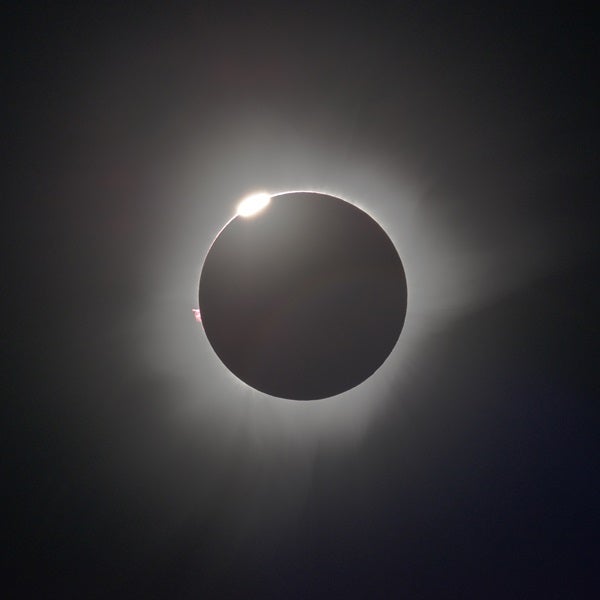Some eclipse chasers — those who seek out the thrill of an eclipse over and over, including literally following the Sun on its path during a single event — are so hooked, they rarely miss a totality and crisscross the globe. When planning such trips, cost and convenience figure prominently. But weather may top the list of basic concerns: A friend went to seven eclipses, but was clouded out of four.
Choices are limited. There’s only a single total solar eclipse each year, and every three to four years, there are none. Upcoming zero years are 2018, 2022, 2025, and 2029.
An eclipse happens only during “eclipse seasons” six months apart, which drift 11 days earlier each year. Thus, after the long Baja eclipse on July 11, 1991, the next was June 30, 1992.
A second pattern, the Saros, is more famous. The ancient Babylonians and Greeks noted that exact eclipse conditions repeat after 18 years, 11 1/3 days, give or take a day.
That “1/3 day” business means our planet rotates one-third of a spin, pushing the location of the next event westward by 120 degrees longitude. Considering that wonderfully long Baja totality of July 10, 1991, we’d expect another long-period eclipse later in July, but 18 years later. Sure enough, China saw a six-and-a-half minute totality on July 22, 2009.
Down the road
Let’s play the eclipse prediction game. We’ll add another 18 years and 11 days and look 120 degrees west, and voila! — a six-and-a-half minute totality over Egypt’s Nile River on August 2, 2027. With likely clear skies!
Now we’re greedy for our own six-plus minute totality. Another one-third of an Earth spin should bring that Saros to our neck of the woods. Indeed, three Saroses — an interval called an exeligmos, a period of 54 years and one month — bring the same sort of eclipse back to roughly the original region.
Bingo! After Egypt in 2027, the next superlong totality is August 12, 2045, in the southern United States — the longest in U.S. history. It’s one exeligmos after Baja.
And in 2023, totality lasts just 1 minute, in a cloudy region of Mexico. But April 8, 2024, brings a totality whose path runs from Texas northeastward over many cities, including Cleveland; Buffalo, Rochester, and Syracuse, New York; and Burlington, Vermont. Wow!
Beat the odds
My eclipse story started March 7, 1970, at Virginia Beach, Virginia. Later, George Schy, a tour operator for Special Interest Tours, asked me to be an eclipse lecturer. We planned and took thousands to one totality after another.
We never got clouded out. Why? We cheated! We never wanted disappointed clients, so we skipped totalities with dismal weather prospects. We “sat out” the short 2013 Africa event and the 2015 North Atlantic totality and were glad we did. Very few people managed to see those.
Sometimes it’s a no-brainer. In 1999, totality stretched from England through France, Germany, Eastern Europe, and Turkey. Logic dictated avoiding cloudy Western Europe and we did, and we enjoyed cloudless skies over the Black Sea.
Some go anyway and luck out. Famously, after World War I, several universities wanted to launch eclipse expeditions since the next events were in the United States. They could afford only one trip. The choice was between an upcoming San Diego totality on September 10, 1923, and New York City on January 24, 1925. Which was more likely to be clear?
Everyone picked Southern California, of course. Yet on eclipse day, the La La Land area was overcast, while New York enjoyed a cloudless winter day. So climate probabilities don’t always pan out. Some go to gloomy-seeming events and beat the odds. Good for them! Me? I’m a coward.
Sun elevation can be a factor, too. With half-cloudy conditions, the overhead sky offers big holes, while puffy clouds nearer the horizon “fill in” and merge together. So if you have a choice of location, go where the Sun is higher — though a low Sun makes for better photographs. Yet another factor is time of day. Midmornings are often clearer than midafternoons.
There are many other considerations. Should you choose a tour, which takes care of lodging, transport, and so on, and where you’ll meet fellow eclipse addicts? Or go it alone? I used to prefer the latter, but a tour is certainly hassle-free, especially in esoteric locales.
Now let’s see if this month’s eclipse makes you an addict.











